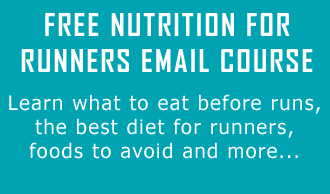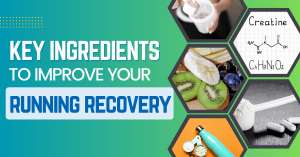This post is the start of a series on training for the marathon. This particular article is going to discuss the scientific background behind energy (fuel) and the marathon. The second article in the series will cover developing and practicing your nutrition strategy. The third will address pre-race fueling, which will include a sample 5 day nutritional guide. Finally, the fourth article will cover fueling during the race and strategies and practice tips you can do during your training to make eating and drinking during the more effective.
Marathon Bonk – Let’s Jump in the Car
Close your eyes and imagine your body is a car. Corvette, Beetle, semi-truck, it doesn’t matter as long as it uses gas. Whichever car you’ve envisioned yourself to be, let’s assume that your gas tank is large enough to hold about 2 hours of fuel at cruising speed (Note: 2 hours is actually about the amount of fuel your body can hold while running at marathon effort). Now, if you were to run a marathon, how many miles would you get before you ran out of fuel? Here’s a hint – it’s your pace in minutes per mile.
Let’s say you plan on running the marathon at 6 minutes per mile. Given our example, you’ll hit the 20 mile mark just as you begin to run out fuel. The problem quickly becomes apparent – you’ve still got 6.2 miles to go. However, the solution seems simple doesn’t it? Stop for gas at 13 miles and you’ll be good to go for the rest of the race, right? Not so fast. Stopping for fuel isn’t going to help you set a new personal best. Furthermore, your body doesn’t always digest the carbohydrates you take in while running. As your body becomes increasingly stressed, it begins to shut down non-essential functions such as the digestive system. So, while you could be consuming enough energy gels to keep a small nation alive, they may not be getting processed by your body – it’s kind of like putting leaded fuel into your automobile.
Moreover, the problem of fuel during the marathon gets further complicated because, just like an actual car, the faster you drive the faster you burn through your fuel. If you’ve ever sped along the highway and compared your miles per gallon at 55 mph and 80 mph you’ll understand this concept. Burning fuel while running is very similar to what you would experience in a car. The faster you attempt to run, the faster your burn through your available fuel. Similarly, if you run slow enough, your body will use its available fat stores as an energy source instead of glycogen, which means you can chug along for quite a long time, but at a very slow pace.
Now you can easily see the conundrum we’re in when trying to train for a race like the marathon. Run fast and you’ll burn out of fuel quickly and bonk in the process. Attempt to refuel the tank when too stressed or without practicing and your body will reject energy. So, what is a runner to do?
Enough about Driving
The two best ways to address the problem of fuel during a marathon are: (1) to practice taking in small amounts of fuel while running fast and (2) to train your body to burn more fat and less glycogen at higher speeds. Fueling during the race will be covered in the third article in this series as this article will focus primarily on how to train your body to burn a greater percentage of fat while running at marathon pace.
If you want to set a new personal best, it’s not enough to run just long and slow miles. Sure, you’ll get used to the fatigued feeling in your legs and you’ll gain the mental confidence from cracking the 20 mile barrier. However, long and slow miles aren’t the best way to make you faster, which is why I don’t believe that slogging through multiple 20 or 22 milers is the best idea for marathoners with a goal of over 3:30. I believe it’s too much time spent running slow and thereby not teaching your body how to burn fat at marathon pace. Instead, you need to (1) practice running fast while tired and (2) teach your body to become more efficient at marathon pace.
Breaking up your long runs
One of the best ways to get in the volume similar to that of a 20 or 22 miler, yet also maintain a faster pace is to break up your long run into two moderately fast long runs. For example, instead of running 22 miles on a Saturday, try running 10 miles on Saturday at a steady pace and follow it up with a 16 miler on Sunday with surges throughout the run or with the last few miles at or near marathon pace. You’ll carry the fatigue of Saturday’s run into Sunday, which will simulate the latter stages of the marathon. However, you won’t be so fatigued that you can’t run fast at the end of the 16-miler.
In this plan, you’ve now run 26 miles for the weekend as opposed to 22 and you’ve completed a good 60% of the run at or near marathon pace, compared to almost none during the 20 miler. That’s 60% more time teaching your body to burn fat at marathon pace as opposed to just slow and easy running. Furthermore, running 22 miles at once will require a significant increase in recovery time, resulting in 4 to 5 days of nothing but slow, easy running. By breaking your run into 10 and 16 mile efforts, you’ll recover within 2 or 3 days, which means returning to more marathon paced work sooner than you otherwise would have been able to.
Practice Running Fast
Many beginning runners wonder why I assign them speed work during marathon training. If the race doesn’t require you to run faster than 8 minutes per mile, why would you need to run faster? Again, the more efficient your body becomes at burning fuel while running fast, the longer you can run marathon pace on race day. Workouts such as threshold intervals enable your body to maintain a marathon effort while running faster than marathon pace and thereby learning to burn fat more efficiently at race pace.
In addition, training elements such as strides and hill sprints help you improve your mechanics and form, which will make running faster feel easier. If running marathon pace becomes less of an effort, you’ll burn less carbohydrates for each mile run (remember more effort means your body utilizes a greater percentage of carbohydrate).
Sum it up already
The marathon is a unique and grueling race, but when you understand the physiological principles of the event you can start to eliminate some of the difficulties presented on race day. This article should help you better understand the basics behind marathon fueling and how to better incorporate faster paced workouts into your training schedule to prepare for the specific demands of the race. If you have any comments or questions, please don’t hesitate to include them in the comments section.








One Response
Hey Jeff. I stumbled across this article when I googled “bonk during marathon training at mile 16.” Ironically, I am doing the marathon training program you setup on Runkeeper.com. I really like the program and have been following it faithfully, but have found that I am hitting a brick wall between mile 15 and 16. Today’s run was 12 miles at steady pace followed by 3 miles at fast pace, ending with a mile back at steady. My body just completely shut down at the end of the fast 3. I had two gels and a 4 bottle fuelbelt, 2 bottles with water, 2 bottles with Accelerade. I tried to fuel at what I thought were the right times, but maybe I’ve got it all wrong. I’ll check out your website and read your articles. Maybe a fueling issue?